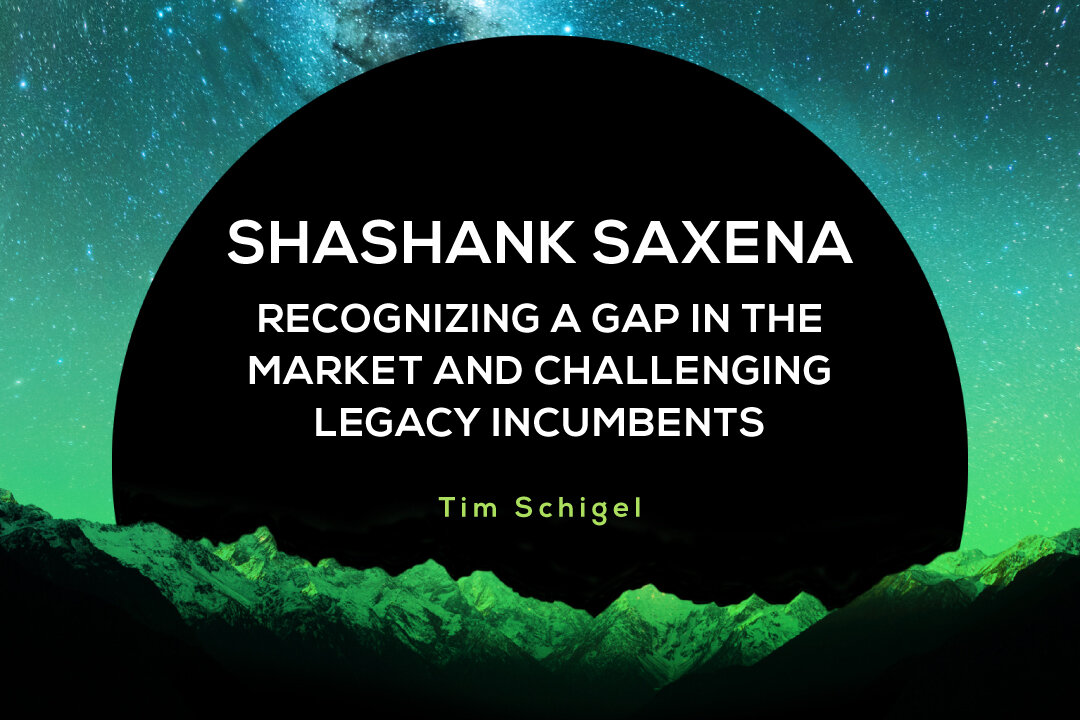Shashank Saxena sat down with me to kick off the very first episode of Fast Frontiers, which we launched back in September. Looking back, we covered so many topics, that I wanted to focus this article on the portion of our conversation that covered specifically how to recognize a gap in the market, as well as how to challenge legacy incumbents.
Shashank is the co-founder of VNDLY, a vendor management system he began in 2017 after a successful stint at Kroger. VNDLY is explicitly designed to help manage the entire non-employee workforce at the Fortune 500 level.
“We are an ERP system of record for the Fortune 500 enterprise to know and manage your entire non-employee workforce,” Shashank succinctly explains, before sharing how when he was first approached with the idea for launching VNDLY, he was unsure. But after some research, he soon realized what a massively untapped (and underserved) area of the market VNDLY would be able to address.
“When Narayana [my co—founder] reached out to me on the idea, what I was surprised when I researched the space was that the space is a duopoly, where 90% of the market share is owned by two companies. One was started in ’98, the other was started in ’99. They are both older than when Y2K happened—to put things in perspective—and there were none of the other [similar] emerging market players,” he remembers.
Upon this realization, Shashank knew that they had to act: “I [knew this was] a massive market opportunity. We sat down, and we wrote a bunch of [hypotheses]. The first one was changing workforce dynamics, where 10, 15 years ago, less than 10% of the Fortune 500 workforce was non-employees. Today it’s almost 44% of non-employees. 56% is full-time employees, right? And very soon, by 2022, analysts are saying it’s going to be 50/50, where half the workforce is going to be non-employees, half is going to be full-time employees.”
Shashank continued elaborating on the first (and second) hypotheses: “We were like, okay, that works as a tailwind in our favor [the hypothesis that the trend will continue and it’s going to be 50/50]. The second hypothesis was if Workday today has a $45 billion market cap, and it’s going to manage 50% of the workforce, which is full-time employees, can we build a company that has an eight to $10 billion market cap as a publicly-traded company that manages the other 50% of the workforce, which is the non-employees?”
Shashank explained how, after forming these two hypotheses (the second one he refers to specifically), he gained the confidence to move forward: “We felt strongly about it because it passes the gut check, right? It’s a good hypothesis to put down on paper and then validate with raising a seed round of capital.”
According to Shashank, a third hypothesis—or further encouragement—soon followed: the wave of SaaS 2.0 technologies that we’re now seeing emerging (and overtaking). “Workday goes and then replaces PeopleSoft in the enterprise, Coupa goes and then replaces Ariba in the enterprise. Salesforce has replaced Siebel CRM. ServiceNow replaces Remedy. There are 50 such examples where you’re seeing this.”
Shashank knew they were sitting on a golden opportunity, and they could not delay. It was time to make a strategy and launch: “[We asked ourselves]: ‘Can we come in and displace some of the legacy incumbents that are in this space?’ We felt strongly about that thesis.”
After writing out these four or five bullet points and putting them all in a nice deck, Shashank picked up the phone and reached out to a few friends, including me.
And from that very moment, VNDLY was on a steady conjecture skyward, up and up and up: “Fortunately enough, we were trying to raise a $1.5 million dollar seed round, and we closed very quickly a $3 million seed round. That’s how really VNDLY got started, and from there on, there was no looking back.”
Hopefully, hearing this snippet of VNDLY’s story has encouraged you that even if you are a “new kid on the block,” your company can still challenge and rival established big ones, especially when you find and can tap into filling a gap in the market.
For more on Shashank and VNDLY, as well as a wealth of other great epsiodes, head over to listen to our website and listen to all of season 1.



